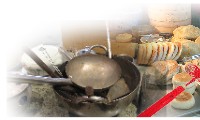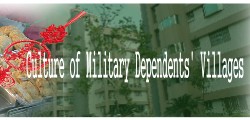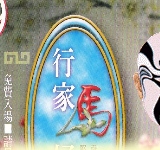 |
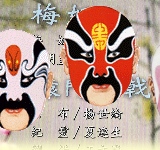 |
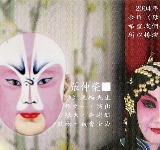 |
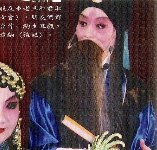 |
Profiles
|
|
as known as ping opera or national opera |
|
originally from Jiangshi, Anhuei , Hubei , etc. |
Actually it is the local opera at the Long River
|
|
region. |
|
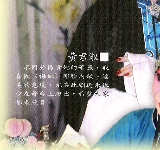 |
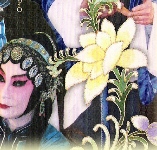 |
| |
Chinese opera is one of top four quintessence of Chinese culture. Among 360 kinds of traditional operas in China , Chinese opera imposes the greatest influence. Since its artistry is much higher than other local operas, it is the best of the best among Chinese traditional operas. |
|
|
|
In 50's and 60's, in order to raise a big family, parents at the military dependents' village had to work from day to night. Their leisure time was precious and enjoyable. Common entertainments included chess, mah-jong, or chatting under the trees; watching opera (performing Chinese opera) with couples of friends (people who like Chinese opera are called ticket friends) was also one of their major entertainments. |
|
Chinese traditional opera, ancient Greek opera, ancient India Buddhism opera are called the world's top three ancient opera culture. Chinese traditional opera has a long history¡Xmusic dance, comedian, and hundred play in the Ching and Han dynasties; army play in the Tang dynasty; Song mixed play in the North Song dynasty; south play in the South Song dynasty as the earliest mature form in opera history; yuan mixed play with significant position in the Yuan dynasty; legendary play from the combination of south play and yuan mixed play in the Ming and Ching dynasties. |
Local plays evolved continuously, gradually formed over 360 styles of different local plays; the famous ones are Chinese opera, kuen play, yue play, guei play, hsiang play, han play, viet play, hu play, yellow plum play, chuan play, Yunnan play, min play, chian play, yu play, river north wooden clappers, etc. Among all kinds of plays, Chinese opera and kuen play imposed the greatest influence.
|
Chinese opera is also called ping opera with 200 years of history. Since its artistry is much higher than other local operas, it is considered to represent Chinese plays in the recent hundred years, so is also called National opera. Chinese opera is not the local plays of Beijing . Its voice was from ¡§erhuang accent¡¨ of Jiangshi and Anhuei in the south, and combined with the popular northern ¡§shipi accent¡¨ in Hubei , becoming an independent play, so is also called ¡§huangpi accent¡¨. It was original from Jianshi, Anhuei , Hubei , etc, actually is the local play around the Long River region. |
Erhuang accent was introduced to the capital, Beijing , at that time around Chianlong 55 th year in Ching dynasty. Accepting the essence of kuen melody and ching accent and adopting some local melody, complete artistry style and performance system were formed and reached its greatest stage in Kuangshiu times. Although many artists devoted their hearts and efforts, the promotion from the palace also made some contribution (e.g., Tszshi, the mother of the emperor, liked Chinese opera a lot), which put Chinese opera at the highest position among all plays.
|
|
The stage performance of Chinese opera follows rules and certain styles. Its accent is banchong way, and its main melody is shipi and erhuang, using jinghu, erhu, yueqin, three strings, flute, wind instrument as orchestral music accompanied with drum, gong, bell, cymbal as percussion instrument. Perform through singing, chanting, posture (hand postures), fighting (martial arts) with equal weight. |
The characters in a Chinese opera are the male, the female, the colored mask, the elder, the crown five categories: |
| I. Male ¡G |
| |
Young male roles, while middle-aged and older roles with beard are call old male. Martial male needs to do acrobatic combat and martial arts in Chinese opera. |
| II.
Female
¡G |
| |
female roles, including blue clothes, flower female, martial female, armor female, old female, etc. Blue clothes refers quite female role aged between 16 and 40. Flower female represents outgoing young girl or woman roles. Martial female means female role with martial arts skills. Armor female is female role wearing armor suit. Old female is elder female role. |
| III.
Colored mask
¡G |
| |
is colored face, wearing facial mask-like male makeup with many colors, is called ¡§jing¡¨ for the opposite meaning. The facial mask art is to distinguish a good or bad person¡Xred face means loyal, black face represents honorable, yellow face means scheming, white face represents hypocritical¡K |
| IV.
Elder
¡G |
| |
the subordinate elder role. |
| V.
Crown
¡G |
| |
also called three color face, representing optimistic character and playful role, similar to the crown in circus. |
|
In 1949, the government moved to Taiwan and brought in the art of Chinese opera. Several opera school such as Fushing drama school, Guoguang drama school, Tapong drama school, etc. were founded to promote Chinese opera. However, due to the trend and external cultures from US pop music, Hollywood movie, Korean drama, Japanese drama, and Taiwanese singing drama later on, the importance of Chinese opera was impacted and declining. Continuing and promoting Chinese opera require our effort. |
| |
| photos is provide by Ma Lan Chinese Opera Club |
|
 |
|


